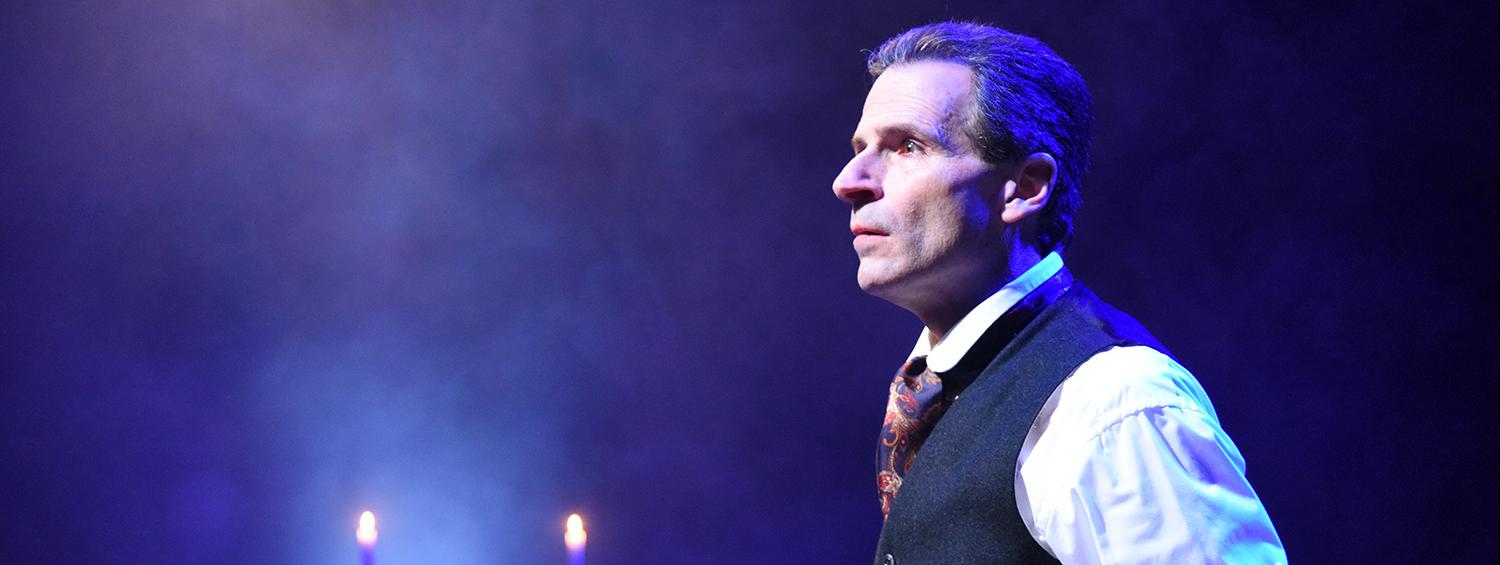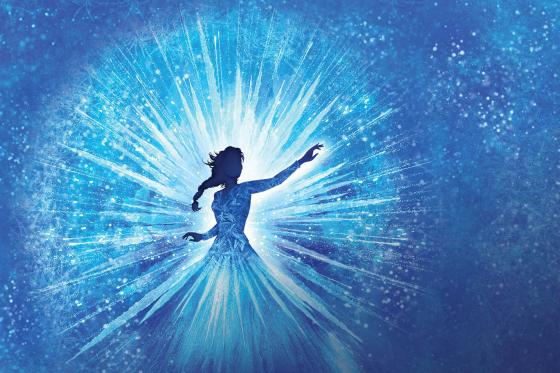A Christmas Carol: A Ghost Story of Christmas
Frequently Asked Questions
by Paul Morella
What makes this version of A CHRISTMAS CAROL different from the others?
This is A CHRISTMAS CAROL as Charles Dickens wrote it and originally intended for it to be experienced. I’ve always found it ironic that what makes this version so unique is the fact that it is so true to the original manuscript. A lot of productions claim to be faithful to the original story, but this IS the original story – the text is exactly 99.5% from the novella – in Dickens’ own words (of the 12,984 words in the adaptation, only 65 are not from the original). It’s unlike any production audiences may have seen and it restores the beautiful simplicity of the original narrative.
It’s a One-Person Show?
Yes, it’s a one-person show, but not in a conventional sense. A little-known fact is that Dickens actually wrote the story to be presented by a solo performer. The words were meant to be spoken aloud, and the narration itself has an urgency and an immediacy that perfectly align with the story-telling dynamic. There is a great theatricality in Dickens’ prose - unforgettable characters, descriptive language, vibrant imagery, and vivid encounters practically leap off the page - and the first-person narrative style is perfectly suited to the solo performer format.
How does it work with one person?
Through an interactive and experiential combination of story-telling and theatre. As the narrator, I act as a sort of guide, leading the audience into a magical world rich with character, atmosphere and action – like a tale told around a Christmas fire. It’s a pop-up book come to life.
Is it a “reading” of the original story?
Not at all. The story is not “read,” but rather spontaneously “experienced” from memory, and shared directly with the audience. It is the closest we can come to Dickens in his public performances, in which he filled the stage with his talent and passion for the story.
Do you present it as Charles Dickens?
No. If anything, I play a Dickensian version of myself. My intention is to bring the story to life as Dickens himself might have done, but I don’t become Charles Dickens. If anything, I seek to channel the spirit and brilliance of Dickens’ story and characters rather than conjure any sort of impersonation or impression. This helps to strip away any theatrical artifice, and keeps the story fresh, resonant and immediate.
Why should I see this version instead of any other stage or film version?
Would you prefer to read a Harry Potter book, let’s say, or to see the movie? What Dickens does is trigger the imagination through his prose, imagery and characterizations, which in turn will take you places you never could go if the work was done for you. What’s more, the Harry Potter books were written to be read; A CHRISTMAS CAROL was written to be performed – narrated in the first-person – which gives it the dynamic of unfolding in the moment, in real time. A sort of experiential storytelling. There is also a wonderful musicality to the language,
This will be your 14th year at Olney; how does the production change from year to year?
Every year the show is essentially taken apart and put back together again. There is never any sense of a “remount." The goal is to allow the experience to continue to evolve and deepen – for both myself and especially for the audience. While the words remain those of Dickens himself, I am constantly going back to the original text, from the initial published version of the story to Dickens’ revised versions as well as his own performing prompt copy. I’m always looking for new narrative threads, characters to inhabit and ways to keep the story fresh, vibrant and in tune with our particular moment in time. New perspectives and production elements are also added, always striving to maintain that balance between the simple power of the narrative and the bold theatricality of the story itself. At times I feel like a sort of literary archaeologist, constantly peeling away the layers as I seek to enliven and enrich my own connection with the story and its message, and strive to keep the narrative enjoyable, entertaining, powerful and alive for every audience.
For example, this season there will be an even deeper atmospheric dimension to the sound design and special effects, the lighting design will be richer and more nuanced, and every character, no matter how small, will contribute in ways that heighten and intensify the narrative. As always there will be new design elements – clocks, pictures, fog, haze, dry ice, shadows, gothic imagery, props, books and atmospherics. The “attic of Dickens’ mind” with a little Edgar Allan Poe tossed into the mix. The entire experience will be more immersive, personal and immediate. Warm and inviting but with haunted and gothic overtones.
How long is the show?
The running time is about two hours, including one 15-minute intermission. This adaptation is somewhere between the version Dickens presented on his reading tour and the full text.
How many characters do you portray?
Just over 50 – 51, to be exact – from the miserly Scrooge to the haunting spirits to the entire Cratchit family. Of course, the narrator leads the way – like the guide on a ghost tour – and every character is fully inhabited in ways that are funny, scary, touching and joyous.
What can I expect when I enter the theatre?
You can expect to be welcomed (literally) into the theater as if entering the home of a close friend. I greet the audience at the door (by name at times), usher them to their seats, deliver all the pre-show announcements and let the story take flight as the evening’s narrator and guide. It’s all very informal, personal and intimate.
Is it for children, as well as adults?
Because it is Dickens, some of the passages can be a bit intense, so I would recommend it for ages 10 and above. It is, after all, “a ghost story,” and like all ghost stories, there can be a few scary moments. However, the darker passages eventually give way to a more radiant light. As Dickens himself wrote in his preface: “May it haunt their houses pleasantly.”
Are there production values, such as a set, lights and sound?
Absolutely. There is a wonderful set that captures the warmth of a lived-in Victorian parlor, accentuated by a varied lighting scheme, sound effects, and a scary, funny and inspired soundscape that is both realistic and otherworldly. At times, even various set pieces morph into props for different scenes. It is both cinematic and theatrical, abstract and realistic.
Is there anything else the audience should know?
This is a theatrical adventure that includes rich descriptive language, colorful characters and wonderfully dramatic encounters. It’s like a roller coaster ride with peaks, valleys, twists and turns. The real star is Dickens himself, and my hope is that the audience will have as much fun in experiencing the story as I do in presenting it. The prose and the characters are inhabited with such a lively spirit that, once encountered, it will forever influence the way the story is perceived. You may enter the theater trying to wrap your mind around how the story “works” in this one-person format, but when you leave, you won’t be able to imagine it presented any other way. It’s a gift from Dickens himself, and I believe the best Christmas present a theatre lover could ask for. There truly is nothing else like it.
What do I do if I have further questions?
You can contact me directly and I will be happy to address any additional questions or concerns you may have. I can be reached at pmorella@verizon.net
Happy Holidays – and I look forward to "visiting" you soon!







